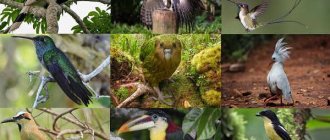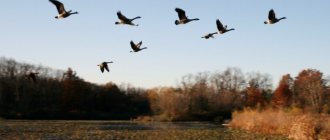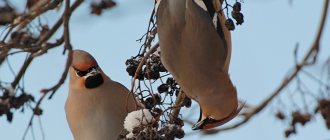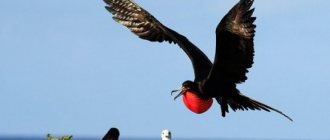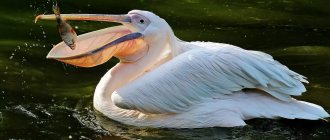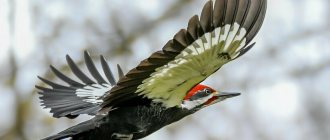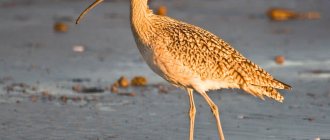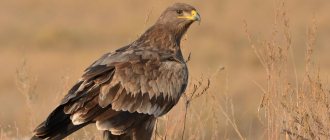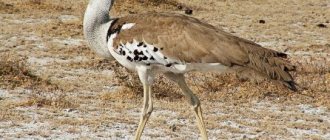Home » Other animals
Birds are very interesting creatures; nature has endowed them not only with varied and colorful plumage, but also with fancy beaks. Of the tens of thousands of bird species, some have beaks of unusual shapes, depending on the functions they perform. And birds use them for obtaining food, feeding, courtship, fighting, building nests, and even to regulate body temperature. But there are also birds whose beaks are completely unusual and bizarre; only one species of bird on earth can boast of such a beak.
- 2 Shoebill
- 3 Roseate Spoonbill
- 4 Great merganser
- 5 Cock of the Rock
- 6 Deadlock
- 7 Toucan
- 8 Sword-billed Hummingbird
Malay kalao
Photo source: ernard DUPONT / flicr
This bird not only has an unusual name, but also a beak. On top of the massive beak is a kind of helmet, reminiscent of a rhinoceros horn. With its powerful beak, the kalao extracts fruits from tropical trees, but the helmet acts as a resonator. The bird makes loud sounds to them.
In Malaysia, the bird is considered a symbol of purity and purity, and in the past it was worshiped as a deity. And today their image, and even the birds themselves, are used in religious rituals.
2
Meet the insectivores
The beak of birds that prefer insects can be of different shapes and lengths. However, it is always thin and sharp. Representatives of this group of birds are swallows, starlings, swifts, tits, thrushes, flycatchers, orioles, and cuckoos.
They consume especially large amounts of food while feeding their offspring. At the same time, insectivorous birds destroy harmful agricultural pests: leaf beetles, moths, beetles, and aphids. They collect their food in the soil, grass, and bushes.
Ecologists believe that it is the activity of birds that prevents harmful insects from multiplying in catastrophic forms. Another interesting fact is that, under favorable conditions, insectivores can change their food preferences. This is very important when certain types of pests develop. Therefore, there is a pattern: if a large number of birds appear within the range, it means that intensive reproduction of insects is observed here, and vice versa.
It is worth noting that birds with different types of beaks have additional features that allow them to obtain food. In raptors, these are wide wings, allowing for “soaring” flight, and sharp claws. And granivores have well-developed muscles.
Thus, the beak of birds corresponds to the nature of the food and the method of obtaining it. According to these characteristics, birds are divided into several groups:
- Predatory - they have a powerful, downward-curved beak. This allows them to attack, hold and tear prey.
- Waterfowl - includes birds with two types of beaks. The first of them is flat and equipped with an apparatus for grinding food. The second is sharp and long, allowing you to search for vertebrates in the water.
- Granivores - have a short but very powerful beak. They develop great force when crushing seeds and fruits.
- Insectivores - characterized by a sharp and thin beak. This allows you to get food from the most inaccessible places.
Spruce crossbill
It is also called the common crossbill, and it belongs to the large family of finches. Despite the species name "common", it has an unusual beak. The crossbill's upper beak intersects with its lower beak. The crossbill feeds on the seeds of coniferous trees, and this crossed beak helps them get to the tasty seeds. With its unusual beak, it easily splits even the strongest cones. A very beautiful, noisy and active bird.
3
Black cutwater
The bird lives in North America and belongs to the waders family. So, of all the North American birds and representatives of waders, the water cutter has the most original beak. It is very long, but thin. In addition, the mandible is longer than the upper part.
The beak is necessary for a special feeding technique. The bird flies over the surface of the water, launching its lower part into it. As soon as a fish is caught, the upper part slams shut.
4
Reproduction
There is no clearly limited nesting period. Despite the diversity of species, most birds are united by a curious way of incubating eggs. First, the male chooses a suitable nest. He cannot hollow it out himself, so he is looking for a suitable abandoned dwelling. He invites the female to the “bride”; after the house’s approval, the birds mate.
Before the female lays eggs, the hollow is almost completely walled up with a mixture of earth, wood dust, fruit pulp, clay and droppings. All components are held together by saliva. A small hole remains through which the male feeds first the female and then the chicks. Sometimes lonely young males help him in this difficult task. In large birds the number of eggs does not exceed three. In smaller ones it reaches 7.
The shelter protects future offspring from snakes, monkeys and other egg lovers. The incubation period lasts from 6 to 8 weeks. During the brooding period, the female manages to completely change her plumage. The male moults during the rainy season. In many species, pairs form for life. The hollow has been used for several years.
Hatching begins after the first egg appears, so the age of the chicks may vary. Constant control over the safety of offspring leads to the fact that the wall is built and destroyed several times. First, the female flies out of the hollow after molting. Then the fledged children, as they grow older, climb out and learn to fly. After each chick leaves the shelter, the wall is destroyed and rebuilt again, and so on until the last chick leaves the hollow. Chicks begin to learn to fly at the age of 3-4 months. They remain with the family until the next breeding season, and sometimes longer.
This behavior is not typical for all representatives of the species. Horned crows choose hollows mainly in baobab trees. They can settle in rock crevices. They don’t wall up their “houses.”
Roseate Spoonbill
The ibis family, to which the spoonbill belongs, is unique in itself. And this resident of Florida also has an unusually shaped beak, which helps her easily obtain food.
With such a long, flattened beak, the bird reaches small fish, crustaceans, and waterfowl in shallow water. Despite Florida's mild climate, spoonbills migrate to Chile in the winter.
5
American Woodcock
Bird beaks must be rigid probes or appendages for collecting and pecking. However, some shorebirds have more bizarre jaw adaptations. Woodcocks from the snipe family have disproportionately long beaks. They live in damp forests and bushes where there is mud and wet soil from which they forage for invertebrates. The woodcock's beak is equipped with nerve endings that allow it to be used as an effective sensory organ. Most incredible of all, however, is the woodcock's ability to bend its bill to gain extra control and maneuverability as it burrows through the forest floor and captures prey. Among its victims are earthworms, beetle larvae and other small invertebrates. This bird's beak feels soft and flesh-like compared to the beaks of many closely related species.
Whether it is a bird or an animal, sometimes a situation arises when, due to a serious injury or terminal illness, it becomes necessary to make the difficult decision to euthanize your pet in order to relieve its pain and suffering. Euthanasia, or euthanasia, in the veterinary service https://vet-memory.ru/ is carried out by a competent specialist. This is an absolutely painless procedure, which involves the administration of an injection with a high content of sleeping pills. Don't worry, your pet won't suffer, and that's the main thing!
Shoebill
We wrote about this beautiful bird on most-beauty.ru in an article about the most beautiful birds in the world.
In the swamps of East Africa you can find an unusual bird, which ornithologists also call the royal heron. The unusual thing is that the shoebill's massive beak looks like a shoe.
In German and English, the species name is translated as “shoe-headed.” He is an excellent fisherman, and became a master of fishing thanks to the special shape of his beak. A natural predator easily looks for fish in troubled waters and kills them with its massive beak.
6
Long-billed Curlew
The curlew spends most of its life on the ocean coast of North America, but builds nests and hatches chicks in the grassland meadows inland. It easily adapted to life in two habitats thanks to the special shape of its beak. In winter, on the coast, the beak helps to hunt crustaceans, pulling them out of holes, and in summer, dig worms out of the ground. The female from the male can be distinguished by the length and shape of the beak. In females it is longer and more curved.
7
American Curlew (Long-billed Curlew)
Curlews have long been known in Europe through popular fiction and cultural references, but the American curlew, native to North America, is the species of curlew with the longest bill of the entire family of plovers. Like many snipes, American curlews actually live far inland, far from oceans and even freshwater bodies. They nest in meadows. This species uses its huge beak like a scythe, catching not aquatic animals, but grasshoppers, crickets and other small field invertebrates. American curlews migrate great distances. During the migration season they can be seen in coastal habitats. The pale beige plumage and long, curved beak, which can reach twenty centimeters in length, give this bird a blade-like appearance when it hunts for prey.
Swordbeak Hummingbird
An amazing bird in itself, the smallest among the feathered inhabitants of the planet. If you look at the proportions of the length of the beak in relation to the body, then the hummingbird has the longest beak of all birds.
This species has a long beak that helps to obtain delicious nectar from flowers with long corollas. For other species of hummingbirds, such food is not available, but swordbills skillfully use this morphological feature.
8
Features of character and lifestyle
Photo: Toucan South America
Toucans are highly organized birds. They create pairs or live in small groups, often with relatives. Together they raise chicks, protect them from attack, feed and train their offspring.
They love to communicate. For communications they use sharp, both high and low, but at the same time quite pleasant sounds. When attacked by a predator, they are able to unite and raise an unbearable hubbub. The alarm raised by the toucans causes a commotion among other inhabitants of the area. The sounds are heard throughout the entire area and warn other inhabitants of the territory about the attack. As a rule, predators exposed to a sound attack retreat. This saves the lives of not only toucans, but also other inhabitants of the forest.
Toucans love to play, joke and misbehave. You can watch birds play out comic battles for possession of a branch. They, like dogs, can steal the piece of wood they like from each other. In fact, this is how birds show their interest and desire to communicate.
Toucans are sociable birds. They easily make contact with people. Curious, trusting, friendly. These qualities are good for taming. People noticed these features and took advantage of them. There are entire nurseries that reproduce toucans for sale.
Great Indian kalao
Another kalao on our list, found in the tropical forests of India and Thailand. The largest representative of hornbills with a large and unusual helmet over its beak. Scientists suggest that it serves for sexual selection.
The beak itself is massive, but the hollow growth serves to produce loud sounds. Flying from branch to branch, kalaos communicate with each other, and therefore one cannot help but hear them when passing by tropical trees.
9
Spreading
The tropical hornbill prefers landscapes with woody vegetation. On the African continent, birds can be found from mountain and equatorial rainforests to savannas and dry woodlands. Several species can coexist in the same territory. They coexist peacefully, occupying various ecological niches.
These birds are found in the southwest of the Arabian Peninsula, on the islands of the Indian and Pacific Oceans, and in Southeast Asia. There are no more hornbills in Madagascar and Australia. Some species are endemic (live in a geographically limited area). Birds practically do not settle in places cultivated by people. They prefer virgin forests.
Great toucan
The massive beak of a beautiful and large bird performs several functions at once. Firstly, the bird can easily split tropical fruits with it. Secondly, it intimidates other birds, protecting its territory. And third, it protects itself from predators.
The beak has another important function. It regulates body temperature with it. By regulating blood flow to its beak, the toucan prevents itself from overheating.
10
Population and species status
Photo: Toucan beak
Scientists have still not been able to accurately calculate the number of toucans. They are known to live on an area of 9.6 million square meters. km. Of the approximately fifty species of toucans known to science, the vast majority are classified as least at risk to the population (LC in the accepted international classification). However, this should not be misleading. Toucan numbers have been steadily declining, and LC status simply means that the decline has not reached 30 percent in 10 years or three generations.
At the same time, some species of toucans are in real danger due to deforestation for agricultural land and coca plantations. Thus, two species of Andigen toucans - the blue Andigen and the flat-billed Andigen - are in a threatened position (NT status). The rainforests of the Andes mountain range are being cut down by local people and large corporations, as a result of which toucans are deprived of their homes and are doomed to death.
The Mexican yellow-throated toucan and golden-breasted toucan have the same status. Scientists do not rule out the extinction of these species in the near future and believe that they require constant monitoring and protective measures. The yellow-throated toucan's fellow white-breasted toucan is in slightly less danger - its status in the international classification is designated as "vulnerable" (VU). As a rule, this category includes animals whose numbers are not yet declining too much, but their habitat areas are being actively destroyed by humans.
Three species of toucan are at greatest risk: the yellow-browed toucanette, the collared toucan and the ariel toucan. All of them have EN status - “in danger”. These birds are on the verge of extinction and their preservation in the wild is already in question.
Rainbow toucan
This bird, native to Central and South America, has a beak similar to that of the Great Toucan. But there are a number of its own features. Unlike its relatives, its beak has a bright color, which is why the bird received its specific name.
The length of the beak reaches 17 cm, and the rainbow colors make the toucan one of the most beautiful birds on our planet. They sleep in hollows, huddled close to each other, and hiding their beaks under the wing. Looking at the photo, it’s easy to guess that toucans also took an honorable place in our ranking of the most beautiful birds according to most-beauty.ru.
11
Hornbill
The hornbill is one of the largest birds of this family. Adults are approximately the size of a swan, their length can reach 91–122 cm, and their weight reaches 2–3 kg. The rhinoceros bird lives up to 90 years.
The rhinoceros is the state bird of the Malaysian state of Sarawak and the national bird of the country. This bird has a white beak with an orange base, and a third part of the beak in the shape of an upward curling fringe. The tip of this part noticeably bends upward, which gives the whole image scale and pomp.
Pelican
Eight species of these amazing birds live on the planet. They settled everywhere except Antarctica. They are distinguished by their unusual beak, with the help of which they obtain food for themselves. Under the beak there is a leather throat pouch.
The bag, like a net, is used to catch fish and filter water. This feature also allows them to make calling sounds during the mating season. The American pelican also has a horn on its beak, which other species do not have.
12
Flamingo
One of the most graceful birds, to which poems and songs are dedicated. One of the differences is the massive, slightly downward-curved long beak. Flamingos find food in ponds and wetlands, and their beak acts as a filter for silt and water. They have long legs. From a height it is easy to spot a fish and catch it with your beak. The pink plumage, as well as the peculiar line of the flamingo’s neck, are also surprising.
13
Great merganser
At first glance, this bird looks like an ordinary duck.
But if you look closely, mergansers are not so simple. The tip of the beak is bent with a sharp hook, and the beak itself is covered with sharp short “teeth”.
These teeth help to deftly grab and hold fish.
Their diet consists of fish (up to 25 cm), and can also feed on frogs, reptiles and even small mammals.
It is also one of the fastest birds; in flight it can reach speeds of up to 80 km/h.
Kiwi
A flightless bird that lives only in New Zealand. The only bird in the world of birds whose nostrils are located at the tip of a long beak. Kiwis do not fly, and therefore find food on the ground. Thanks to this arrangement of the nostrils, they have an excellent sense of smell. It is with the help of smell that they easily find food for themselves.
14
Dead end
This bird is called differently because of the peculiarities of its beak. Firstly, it has an unusual shape, and secondly, its beak is painted with red stripes. Because of this, you can hear the names sea clown, sea parrot.
But that's not all the amazing features. Puffins have small teeth on their beaks. The bird feeds on fish, and these teeth allow you to move up to ten fish at once.
15
Appearance and features
Photo: Toucan bird
All 43 species of toucans have prominent beaks. This part of the bird’s body attracts special attention from ornithologists. Entire chapters are devoted to it, describing color, shape, bite force and impact.
The beak of toucans is covered with a reliable horny sheath. Its unusual coloring gives its name to several species: the pied-billed, black-billed, grey-billed and banded-billed toucans. In fact, there are many more beak colors - yellow, lemon, orange, blue, green, red and brown. All of them are combined with bright inserts and look like stained glass windows.
Video: Toucan
The shape and size of the bird's beak deserve a separate description. A total of 8 forms are known. They are all fundamentally similar and resemble an elongated sunflower seed with a curved end. The beak is flattened horizontally, which allows the toucan to manipulate it in narrow openings in search of food.
Despite the impressive size of the beak, which sometimes reaches 50% of the body length, it is quite light. The weight of the beak depends on the internal structure of the tissue. The bone plates are connected to each other like a honeycomb and thereby create a rigid frame.
Because of the serrations along the beak line that resemble the teeth of flying prehistoric predators, toucans were thought to be carnivorous birds of prey. Years of observations have not confirmed the theory. Toucans do not eat their own kind. Their diet does not even include fish. These birds are fruit eaters.
The toucan's beak is a cooling device. Thermal imagers showed that the beak emits heat, which means it is through this part of the body that the toucan cools the body. The shape and size of the beak may vary depending on the age of the bird. In babies, the lower part of the beak is much wider. Over time, it levels out and acquires a natural bend.
Toucans have a very long tongue. This organ grows up to 14 centimeters. Its size is determined by the size of the beak. The tongue has a sticky, rough surface. The size of large birds reaches 70 cm, small ones grow up to 30 cm. Weight rarely exceeds 700 grams. Small, strong paws have paired toes. The first and fifth are turned back. The short, flexible neck allows you to turn your head.
The plumage is bright, contrasting, and combines several colors at once. Almost the entire body is covered with black or dark bluish feathers, with the exception of the throat, which is white. The wings are not suitable for long continuous flight. The length of the tail girdle is 22–26 cm. The eyes are bordered by a ring of blue skin, which is bordered by orange skin. The tail is long, it can reach 14-18 cm.
American Avocet
An elegant bird with beautiful plumage and long limbs. In nesting areas it is also called “blue paws”. She has one more feature. This is a long, slightly curved beak.
The avocet hunts crustaceans in shallow waters. This beak shape helps to catch small fish. The beak helps the pretty bird defend itself from natural enemies.
?
Summarize
The main function of the beak in birds is to capture and grind food. But birds also use it for hygiene, to clean their feathers, as they say. It is also a construction tool for creating nests. Beaks are also dangerous weapons with which birds defend themselves from enemies.
The editors of most-beauty.ru ask you to write in the comments to the article what other birds with beautiful or unusual beaks should be on our list.
Birds and their amazing beaks. Associations. Material with photos and crosswords
Interesting things about birds. Mysteries of the structure of the beak of birds. Associations.
Birds and their amazing beaks. Material with photos and crosswords.
Author
: Bityugova Tatyana Gennadievna, teacher-speech therapist, St. Petersburg
Purpose:
this material can be used in full for high school as part of a lesson, in part, with children of preschool and primary school age; will be useful for educators, teachers, additional education teachers, and bird lovers.
Target:
enriching knowledge about birds
Tasks:
- expand children's knowledge about birds
- develop observation, imagination, memory, associative thinking
- develop fine motor skills, eye...
- cultivate interest in solving interesting problems
— to cultivate love and respect for birds and all living things.
When examining a bird, we always pay attention not only to its size and color, but also to its beak. Each bird has a special beak. Its structure depends on the environment in which the bird lives and what, and most importantly, how it feeds.
Birds of prey typically have hooked, sharp beaks that are capable of tearing apart prey.
Granivorous birds have short, strong beaks that help the bird break and crush seeds and grains.
In insectivorous birds, the beaks are sharp and quite thin.
Birds living in water are distinguished by flat beaks with plates and teeth.
And there are birds that have very unusual beaks. You won’t confuse birds with such beaks with anyone else and will immediately remember them.
When talking with children about birds, you can offer to compare the beaks of birds with objects that they resemble, and also lead children to particularly memorable associations.
Crossbill:
the beak looks like scissors with curved ends. The crossbill pulls seeds out of cones by lifting the scales with the ends of its cross-shaped beak.
Flamingo:
the beak looks like a colander. The bird filters the water through its beak in search of crustaceans, algae, mollusks, and insect larvae.
Hoopoe:
the beak resembles tweezers. The hoopoe picks the ground with its beak and after it finds insects, larvae, worms, it kneads them for a long time with its “tweezers” and only after that swallows it whole.
Woodpecker:
the beak looks like a jackhammer. The woodpecker chisels the bark of trees in search of insects and their larvae, and also pecks cones and nuts, “processing” them on the stumps.
Bullfinch:
the beak resembles pliers. It crushes seeds, buds and berries of plants.
Parrot:
beak like nippers. It cracks nuts and seeds with its beak.
Hummingbird:
beak like a cocktail straw. With its help, the bird absorbs the nectar of flowers.
Heron:
the beak resembles a surgical clamp. The beak is sharp with a serrated edge and helps the bird snatch fish and amphibians from the water.
Nightjar:
the beak is like a big net. In flight, the bird opens its beak wide and catches insects using the bristles surrounding the beak.
Pelican:
beak like a ladle. The pelican catches fish by scooping it up with its beak like a ladle.
Spoonbill:
the beak resembles a strainer. The bird moves its beak from side to side underwater in search of prey and captures small aquatic inhabitants.
Golden eagle:
beak like pruning shears. The golden eagle tears apart its prey, tearing off and swallowing small pieces.
Avocet:
the beak looks like a sapper's probe. The avocet searches for invertebrates in the water, as well as insects, crustaceans, and seeds of aquatic plants. She moves her beak from side to side and feels the muddy places of small bodies of water.
Kingfisher:
beak, like a pike, a spear. The bird looks out for small fish, insects, sometimes frogs, tadpoles from the air, then dives and more often than not just catches, but pierces its prey with its beak, then removes it from its beak, throws it up, catches it with its beak and then eats it whole.
Dead end:
the beak resembles a net with hooks. Surprisingly, the puffin can continue to catch fish without releasing the already caught fish from its beak. With his tongue, he directs the fish deep into the beak, as if stringing it on a skewer and hooking it onto the spike hooks located on the upper part of the beak and continues hunting for the next fish.
Task No. 1
For those who were very attentive while studying this material, it will not be difficult to solve the following puzzle.
To solve it, you need to enter in the boxes the names of birds whose beaks are similar to the objects depicted.
Then find the beginning of the puzzle (arrow) and, moving along the lines from letter to letter, read the folk wisdom.
To make it easier to read, you can highlight the letters with a red pencil.
“Every bird is fed with its own beak,” as the popular wisdom says.
Task No. 2
Name the eight birds shown in the pictures and write their names in the boxes.
Then pay attention to the letters in the lilac squares and write them separately in order. You will read the name of the ninth bird - one of the most mysterious creatures on earth.
This is a shoebill or royal heron. This bird feeds on fish and catches frogs, snakes and young turtles. Shoebill has great patience. Without moving, with his head lowered into the water, he patiently waits for a fish to appear nearby.
Sometimes he walks very slowly and carefully in the reed thickets until future prey appears on the surface. Then he immediately spreads his wings and rushes forward, trying to catch the victim with his large beak with a sharp hook at the end. After a successful hunt, the bird first separates the prey from the plants and then swallows the edible part.
Task No. 3
You can invite children to get creative and draw pictures of objects that the shoebill’s beak looks like.
